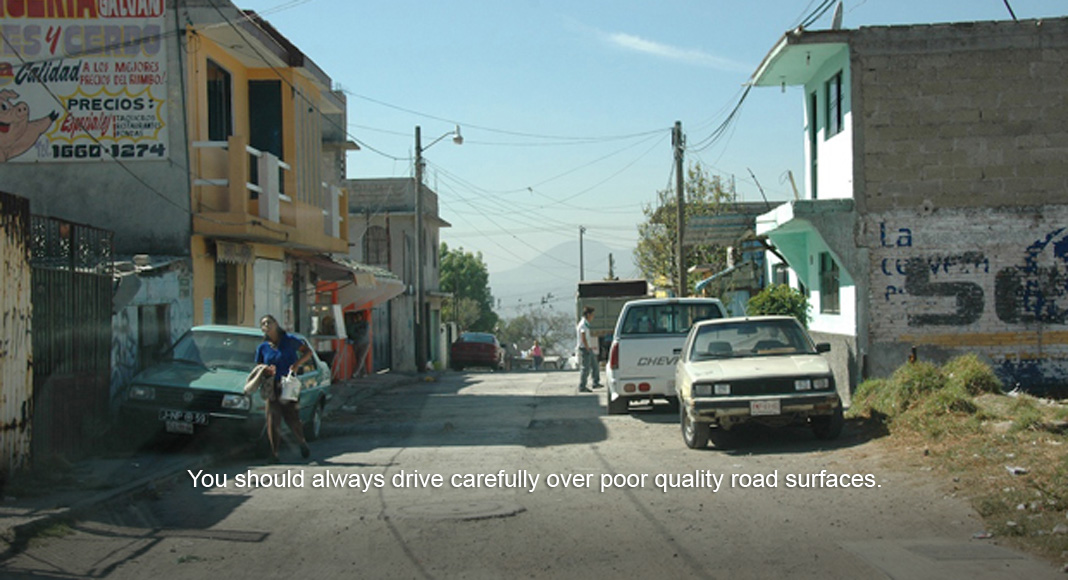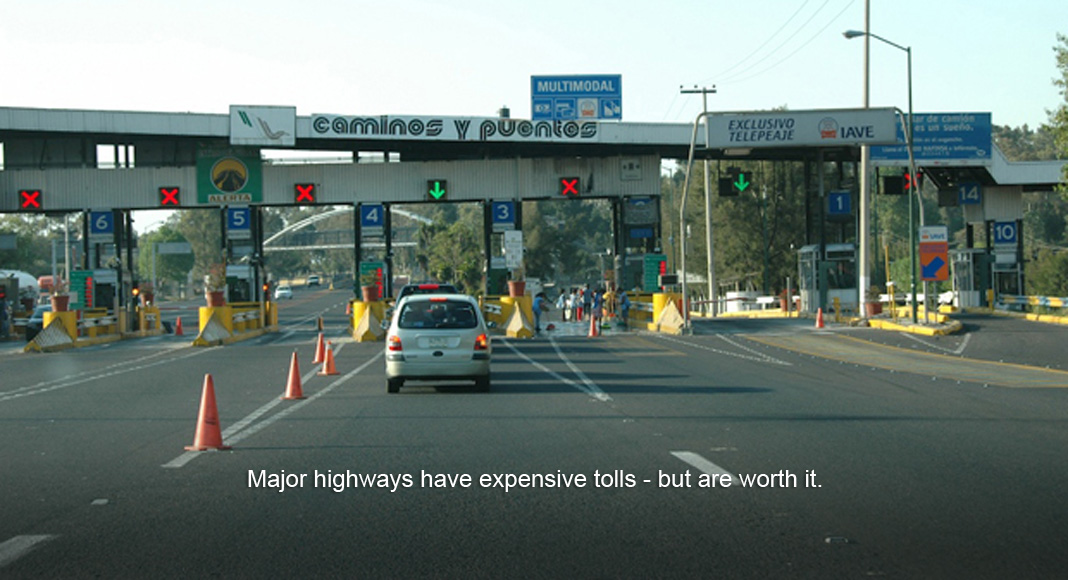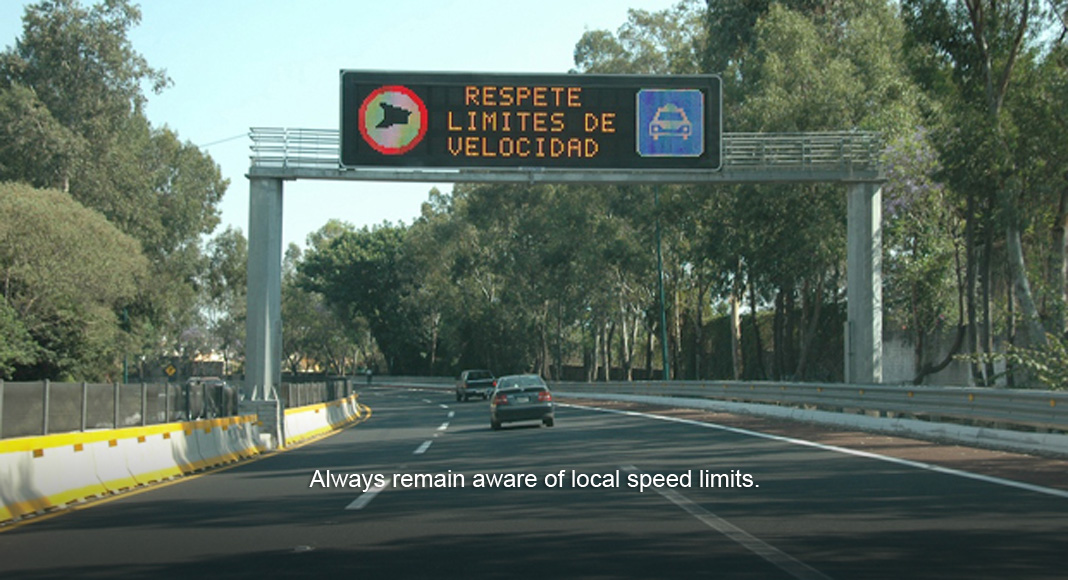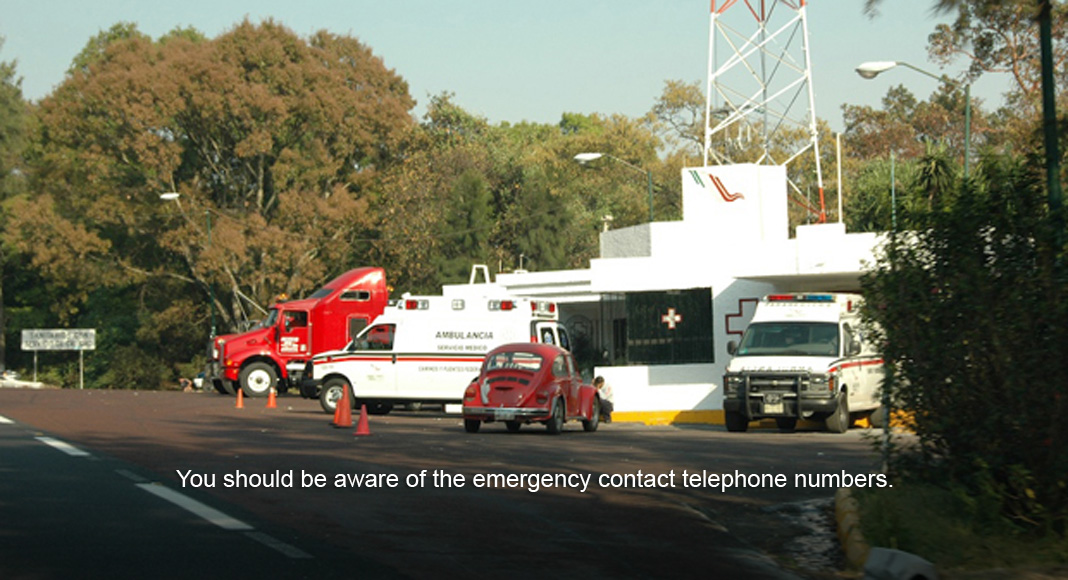Basics
GENERAL INFORMATION
In Mexico you should drive on the right-hand side of the road.
Distances are measured in kilometers. To convert miles per hour into kilometers per hour (km/h) you should divide by eight and multiply by five. For example 80 km/h is equal to 50 mph.
Spanish is the main language of Mexico and is widely spoken throughout the country, however there are areas where the main language is not Spanish and is an indigenous one. Even so, you will be able to find Spanish speakers in the towns. English speakers can be found in major cities and in all major hotels, but it is recommended that you know at least a few basics of the Spanish language.
The national emergency number in Mexico is 911.
Mexico is a large country, and you may find that there are long distances between towns. When driving along these roads be sure to take regular rest breaks to reduce fatigue and fill up with fuel whenever possible.
Many roads outside of cities are unlit and this can make it difficult to see and be seen during the hours of darkness. To make matters worse, road markings are not always present. It is best not to drive at night, but if you have to you should try to stick to the highways and carry a high visibility vest in case you break down.
At night you should be especially aware of pedestrians and cyclists. They will not have lights and may be coming towards you on your side of the road. Similarly, many roads do not have fences and animals often stray into the road.
Although many of the new Autopistas (Highways) at least match western roads in their condition the same cannot be said for many non-highway roads. Often roads outside of the major cities will not be covered in asphalt and those roads inside cites are littered with potholes. Occasionally some of the larger potholes will be marked with a large object of some sort or a proper sign if available. Roads generally are much narrower than those found in North America. Caution is the key.
Many roads in cities (particularly the capital) are overcrowded with high levels of air pollution. Do not expect to get anywhere quickly. It is not recommended that you drive through the capital as it is far quicker to get around using the metro system / buses / taxis. This contrasts with the tolled highways which are empty in comparison due to the high prices levied.
Speed Limits
Unless otherwise stated, you should not exceed 60km/h in built up areas. Obviously you should reduce this in many situations (and often you won’t have the chance to drive 60km/h in major cities).
Be aware that local speed limits may be in operation so you should pay attention to road signs. The speed limits listed are maximums in ideal conditions. Often it will not be appropriate to drive at those speeds so use your own judgment.
Highway
Non-highway, two-lane roads in Mexico are usually packed with trucks, busses, and passenger cars. Whenever possible it is advised that you take the highway.
Mexico has an extensive network of good quality highways and secondary arterial roads. Older maps will not show all of the newer highways so it is a good idea to invest in a new map upon entering the country. If hiring a car, the hire company will be able to supply you one. It is possible to remain on good quality highways from the Texas border through to Acapulco and on the Pacific coast, from the border at Nogales, to Mazatlán.
Fuel
Fuel is sold through a variety of new brands but prices are uniform throughout the country. There is no point in trying to ‘shop around’ for the best prices.
Regular unleaded petrol is called magna sin. Additionally ‘Diesel’ fuel and premium can be found.
All fuel stations provide full service. This means that an attendant will dispense the fuel for you. You may ask for a particular monetary amount or simply to fill up the tank. The attendants will also clean your windscreen, check tyres and perform any other minor checks for you. It is customary to tip attendants for this service.
Credit cards are accepted at most fuel stations, but you should always have enough cash to pay for your purchase in case the credit card device is not working.
Breakdown Assistance
If you are planning to drive into Mexico from an adjoining country you should ensure that your vehicle is in good condition prior to leaving. You should also carry spare water for the radiator, screen wash, oil and a spare tyre. These precautionary measures will reduce the chances of you breaking down.
If renting a car, your car rental company will provide you with details of what to do if you break down.
‘Angeles Verdes’ (Green Angels) are mechanics in green trucks with red lights on top who monitor the highways in search of broken down vehicles. On popular routes the mechanic may speak English. They will provide assistance free of charge although you should provide a tip. If you run out of fuel they will often sell you some and, if required, will tow you to a nearby town if more serious repairs are needed. If you require assistance from one of these mechanics you should stop at the side of the road and raise the bonnet/hood of your vehicle.
Most major fuel stations take credit cards now but you should always consider having enough cash to pay for your purchase.
Tolls
You can purchase a ‘toll card’ and add your credit card information so it will automatically charge you when crossing through the ‘toll card holders’ lane where available.
Most highways in Mexico are toll roads. In exchange for high fees, they provide very good driving conditions and contain very little traffic – a stark contrast to the alternatives.
License And Documentation
When driving in Mexico you should always carry your license with you along with details of your motor insurance. If stopped by the police you will be required to provide it. They will also ask to see your car’s registration card.
It’s very important to have valid insurance for the country if driving your own car. When hiring a rental car, included is the insurance fee which is compulsory.
Wildlife
The main danger posed by animals on Mexican roads is that of livestock wandering onto the roads. The lack of fencing around roads means that often animals enter the roads to get to another source of food. Many collisions with animals occur in Mexico each year. When driving on roads bordered by fields, take extra care and slow down when you view of the road ahead is reduced. This is particularly important at night.







